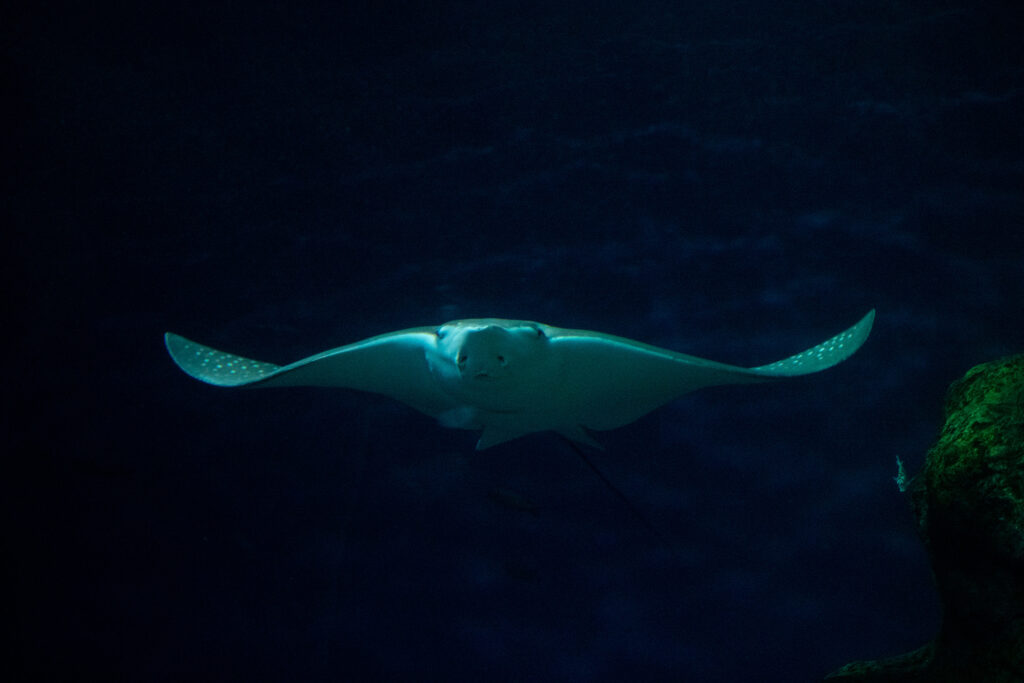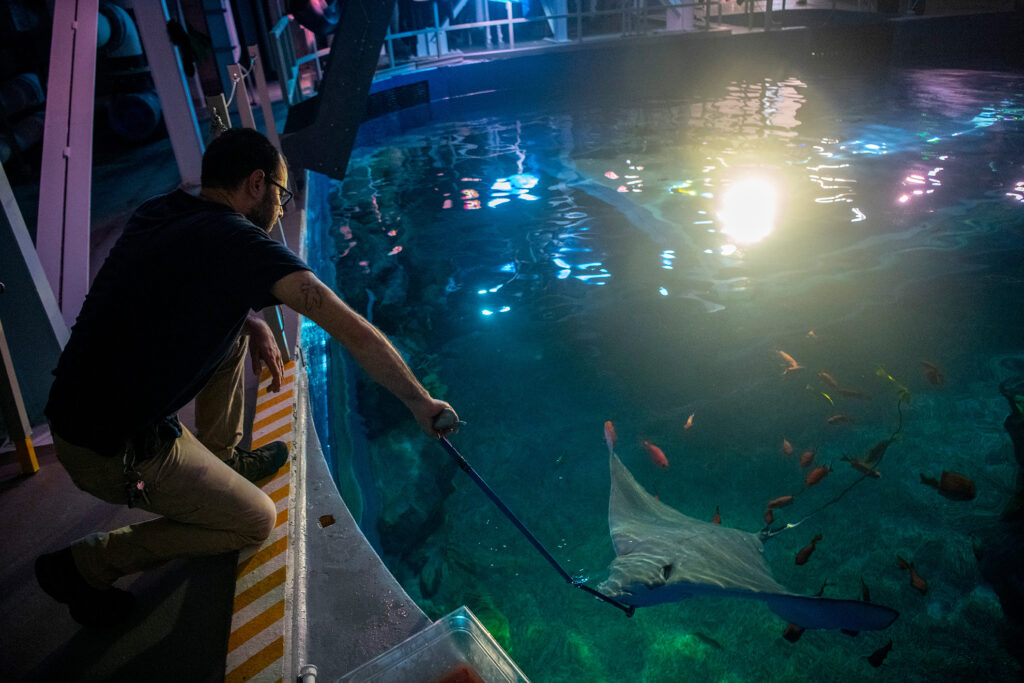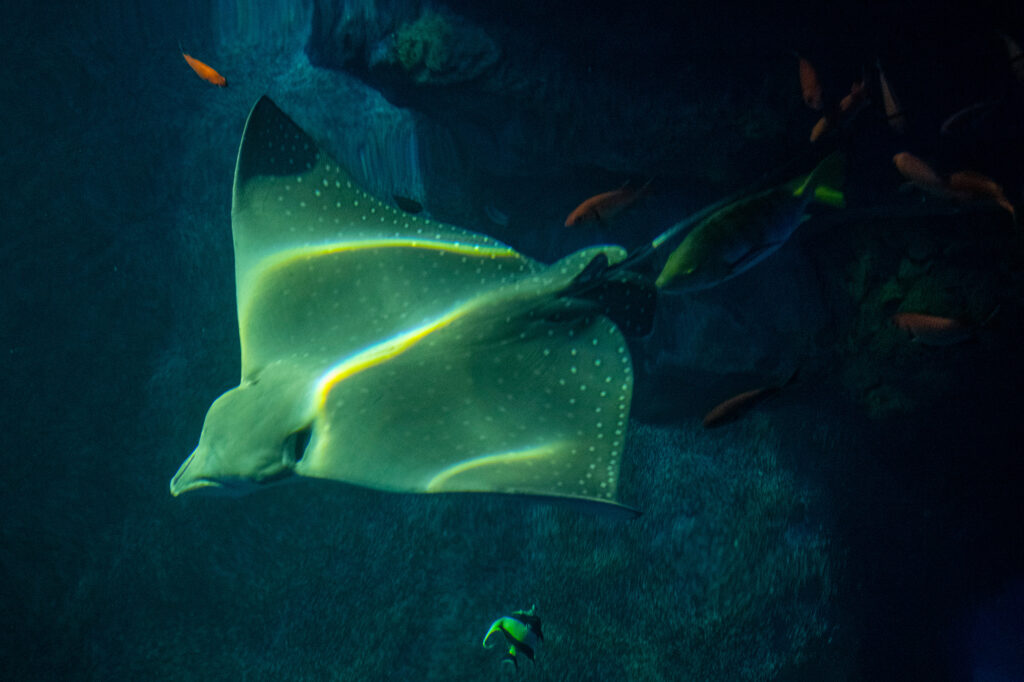Her wingspan is 6.2 feet wide. From nose to tail, she’s 13 feet long. She’s noticeably more prominent than the three other female ocellated eagle rays in the Pacific Seas Aquarium. And her name — Rayna — (a punny take on the Spanish name “Reina”) means “queen.”
“Even the hammerhead sharks get out of her way,” said Tyler, a staff biologist who works closely with the rays in the Baja Bay habitat of the aquarium. “All of the rays run the aquarium, but especially her.”
Weighing 180 pounds, Rayna, who arrived at her Tacoma home in November, is twice the size of rays Mimi, Luna, and Freckles.
“She’s the largest animal in the habitat, but she doesn’t throw her weight around,” said Tyler. “She’s cool as a cucumber.”
During a recent feed, Rayna took her time with each herring bite. Tyler would feed her a fish using a pole, and she would suck it up and swim a lap before coming back for more. Meanwhile, the other three splashed around, eagerly devouring their food.
“Feeding time is a great way to showcase how different she is from the others,” said Tyler.
Rayna is fed up to 3 pounds of sustainable seafood daily, compared to under 2 pounds for the other rays. They all enjoy herring, squid, shrimp, and mahi, among other kinds of seafood.
About Eagle Rays
Eagle rays are one of the largest rays in the ocean. They are found in warm water across the Indo-Pacific and Atlantic oceans. They get their name from their wing-like pectoral fins, which seem to fly through the water. A long, whip-like tail has up to six barbed spines at its base.
Spotted eagle rays are listed as near threatened and are included in the Species Survival Plan® through the Association of Zoos and Aquariums. They are fished for meat, cartilage, and their tails.
Spot Her (Literally)
Eagle rays have a distinctive pattern of small whitish spots across their dark gray-blue backs. Aside from the apparent size difference, Rayna has fewer spots overall than the others.
Collaborative Care
Point Defiance Zoo & Aquarium collaborates with other zoos and aquariums across the country to manage the ocellated eagle rays in human care. A California aquarium needed to separate its male and female rays and Point Defiance Zoo was able to provide a permanent home for Rayna.
“We currently have a female-only population and were able to welcome Rayna with open wings (eagle ray pun),” said Tyler.


